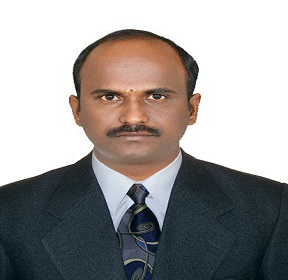Speakers
Rui Campos
University of Antwerp BelgiumTitle: Photoelectrochemical multiplex biosensor for detection and quantification of miRNAs clinically relevant in prostate cancer
Abstract:
Analysis of peripheral blood as a source of, tumour-shed, cancer biomarkers has been fostered with the concept of liquid biopsy. Circulating aberrant amounts of non-coding microRNA (miRNA, 18-25 nucleotides) have been shown to be clinically associated with cancer. Data from clinical studies and meta-analysis demonstrated that altered expression of microRNAs in plasma to be associated with prostate cancer (PCa) aggressiveness, distant metastasis, biochemical recurrence and prognosis. The high chemical stability of miRNAs in body fluids makes them powerful biomarkers present at levels suitable for testing in patient samples. The idea of using light to develop biosensors is recent and these sensors have the advantage that the analytical signal is only triggered by light, so the signal and background can be clearly distinguished by turning on/off the light source.1 The use of a photosensitiser instead of an enzyme has several advantages: higher S/N ratio; on-off control of sensing by light switching; chemical and thermal stability and lower price. In INFORM a sandwich assay is used to detect miRNAs that are clinically relevant in PCa. The capture strand is immobilized on a screen-printed gold electrode and the detection strand is labeled with a photosensitiser, which produces singlet oxygen, 1O2, upon excitation with light. The 1O2 produce is quantified using chronoamperometry and it is proportional to the concentration of miRNA in solution.
The various strategies adopted and the results achieved for individual and simultaneous detection of three (3) miRNAs will be discussed. 2,3
(1) Trashin et al. Nat. Commun. 2017, 8 (1), 1–10
(2) Campos et al. Submitted.
(3) Shanmugam et al., In Preparation. 2021.
Biography:
Rui Campos is a MSCA-IF fellow in the A-Sense Lab at the University of Antwerp, Belgium. He holds a Ph.D. in Chemistry from Durham University (UK) and has worked as a post-doctoral fellow at iNANO (Aarhus University, Denmark) and INL (International Iberian Nanotechnology Laboratory, Portugal). His research interests are in the development of (bio)sensors for the detection of biomarkers that can increase the quality of life of patients and the general population, with a particular focus on DNA based biosensors. Rui Campos (Scopus Author ID: 37033605300) is the author of 23 peer-reviewed articles.
Dr Apurva Bhasin
PhageTech, Inc. United StatesTitle: Enhancing the Sensitivity of the Virus BioResistor by Overoxidation: Detecting IgG Antibodies by Apurva Bhasin
Abstract:
Antibodies can be indicators of disease and its progression. A relatable example is the COVID pandemic, during which antibody tests to determine exposure to the SARS-CoV-2 virus are time-consuming, lab-exclusive techniques performed by trained technicians. Detecting antibodies with electrochemical sensors promises to eliminate the complexity and exclusivity of the current test methods. This project presents an electrochemically engineered virus bio-resistor (VBR) composed of a bio-layer embedded with M13 phage particles that supplant antigens to detect antibodies. In prior work, the VBR demonstrated rapid detection of a bladder cancer marker DJ1 (20.8 kDa) using a simple dip and read modality.1 In the present work, we found that VBRs exhibit a sensitivity that is inversely related to the molecular weight of the protein target. Thus, large proteins, such as IgG antibodies (150 kDa), were undetectable even at high concentrations. To remediate this, overoxidation of the VBR channel was accomplished potentiostatically at +0.8 V vs. MSE for 100−150 s in aqueous 12.5 mM LiClO4. Over-oxidation resulted in an increased electrical impedance, enhancing sensitivity for small and large proteins. The signal generated by these “O 2VBRs” was amplified by 3-7 x for the DJ1 biomarker compared to unmodified VBRs. SEM and AFM images illustrated pronounced changes to the topography of the virus-PEDOT layer caused by overoxidation. O 2VBRs enabled the detection and quantitation of two antibodies, anti-FLAG IgG and anti-M13 antibody, with a detection limit of 40 ng/mL and a dynamic range of quantification extending to 600 ng/mL.2 Additionally, KD values of 220 (±20) ng/mL (anti-M13) and 402 (±7) ng/mL (anti-FLAG) suggested that VBR can differentiate between the binding affinities of the two antibodies.
Jayakumar Kumarasamy
Agricultural Research Organization IndiaTitle: E-BABE- Graphene Hybrids Polymer Composite Nanomaterials Based on Electrochemical DNA Sensors
Abstract:
Electrochemical genosensors for the ultra-trace determination of label-free DNA hybridization with ultrahigh sensitivity, low cost, specifific selectivity and fast analysis can be developed for cancer diagnosis and food science in complicated samples using a variety of gold (Au) nanomaterials and their three-dimensional (3D) nanoarchitectures as well as layer-by-layer (LBL) assembly. We explored the LBL assembled gold nanoparticles (AuNPs)/lower-generation (Gn≤3) polyamidoamine dendrimer (PD) with the reduced graphene oxide (rGO) core as electrochemical gene nanobiosensing platforms with 3D fractal nanoarchitecture for fast, ultra-trace determination of label-free DNA hybridization. Their morphologies, structures, electrochemical properties, and gene nanobiosensing performances were characterized. AuNPs/GG2PD displayed the best excellent structural stability, lowest mobility on solid surface with the increasing charge resistance, widest linear range (1.1 × 10−6 – 1 × 10−18), and the lowest limit of detection (1.87 × 10−19 M) in comparison with both AuNPs/GG1PD-based and AuNPs/GG3PD-based probes. This work will provide a new candidate for the development of metal nanoparticles functionalized PD with inorganic nonmetallic nanomaterials as cores with 3D fractal nanoarchitecture and promising electrochemical gene nanobiosensing platforms based on dendrimer-nanoinorganic hybrids with 3D nanoarchitectures and LBL assembly for fast and ultra-trace detection of lab -free DNA hybridization with potential application in bioanalysis and medical diagnosis of genetic diseases.
Biography:
Dr. Kumarasamy Jayakumar, Biosensors & Nanoengineering Lab, Institute of Agricultural Engineering, Agricultural Research Organization, Rishon LeZion,505101, Israel. Moreover, He had completed his M.Sc. degree at Annamalai University, India in 2007. During, M.Phil., Chemistry from Madurai Kamaraj University, Madurai, Tamil Nadu, India in 2008 and a Ph.D. degree from the Alagappa University, Karaikudi, Tamil Nadu, India in 2015. He received his post-doctoral researcher position at Pusan National University, Busan in South Korea between March 2015 to August 2015 followed by Post-doctoral appointments from Department of Chemistry, Nanjing University, Nanjing, China( 2017 to 2019). He also reviewed high repeated national and international journals and participated in oral presentations for national and international conferences in India, Europe, and China. Currently, He has contributed to published more than eight research articles for high repeated and international journals over the last five years. Although, the electrochemical DNA biosensing articles reached 150 citations and h-index 8 and one book chapter.



